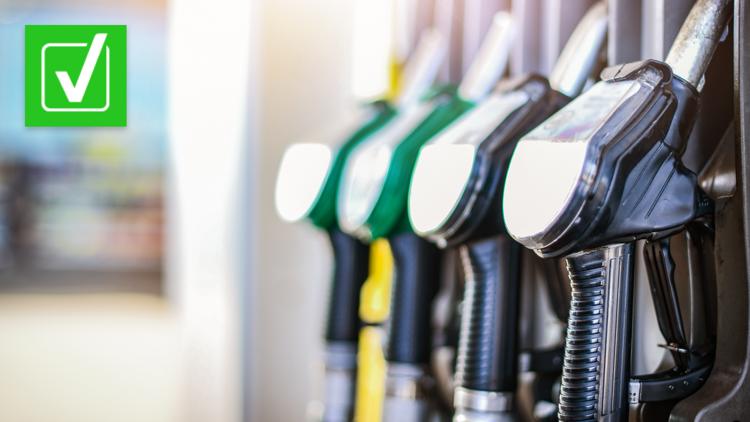The Centers for Disease Control and Prevention (CDC) has reported an uptick in hospital admissions and deaths related to COVID-19, sparking concerns online.
A viral chain text message that said the Delta variant of COVID-19 was rapidly spreading through gas station pumps went viral in 2021. A previous VERIFY found this claim to be false.
But with new variants circulating, VERIFY viewer Edward texted us to ask if it's now possible to contract COVID-19 from gas pumps.
THE QUESTION
Can you get COVID-19 from gas pumps?
THE SOURCES
- American Petroleum Institute (API)
- Centers for Disease Control and Prevention (CDC)
- World Health Organization (WHO)
- Payal Kohli, M.D.
- A study published in The New England Journal of Medicine
- A study published in The Lancet
- A study published in the Journal of Exposure Science & Environmental Epidemiology
- An article published by the University of Michigan School of Public Health
THE ANSWER
Yes, you can get COVID-19 from gas pumps, but it's not likely.
WHAT WE FOUND
Contracting COVID-19 while pumping gas is possible, but not likely. The World Health Organization (WHO) says people can contract the virus “when touching their eyes, nose or mouth after touching surfaces or objects that have been contaminated by the virus.”
COVID-19 can be present on gas pumps, as the virus is able to survive 48-72 hours on plastic and stainless steel materials, according to a study published in The New England Journal of Medicine. In another study, researchers from Imperial College-London analyzed 279 households and found that COVID transmission was higher among those living in spaces where the virus was detected on surfaces in the home.
While it's possible to contract the virus from touching a gas pump, the chances of this happening are very low, despite guidance generally shared by public health officials at the beginning of the pandemic when researchers were still trying to understand exactly how the virus spreads. COVID is mainly spread from being in close contact with an infected person spreading small liquid particles, according to the WHO.
“The majority of transmission all throughout the COVID pandemic has been person-to-person. It’s only a small percentage of cases that are actually transmitted through surfaces,” Payal Kohli, M.D., said.
She adds that with newer variants, “some are certainly more contagious because they’re better at evading the immune system, but that doesn’t necessarily correlate with how long these variants are able to survive on surfaces and how hearty they are.” While these newer variants can behave differently in how contagious they are or how they respond to treatment, experts and the CDC still share the same prevention recommendations.
A 2022 study conducted by researchers at the University of Michigan focused on the spread of COVID-19 in the school’s public spaces across a two-year period. “The risk of surface transmission was 1,000 times lower than airborne transmission,” said Chuanwu Xi, one of the researchers, in a University of Michigan article.
The overall probability for infection was 1 per 100 exposures through inhalation and 1 per 100,000 from contaminated surfaces. This study also notes that “the virus can remain viable on surfaces such as plastic, stainless steel, glass, ceramics, wood, cotton, and paper for 4 to 7 days,” and sometimes longer depending on the environment.
The American Petroleum Institute adds that the risk is “no different than the risk associated with touching other common surfaces like grocery store carts or door handles.” But if you’re concerned about exposure to the virus in public areas, Kohli recommends taking extra precautions in high traffic locations like gas stations or bathrooms as “the likelihood of contamination if somebody sneezed into their hand and then touched the surface is higher on those types of sort of common shared surfaces.”
The CDC’s latest recommendations for staying safe from new strains of the virus include:
- Getting your COVID-19 vaccines, as recommended
- Wearing a high-quality mask that fits well over your nose and mouth, if you choose to wear one
- Washing your hands
Kohli and the API both recommend using tissue or paper towels for a “no touch” experience. Gloves are not recommended, the WHO says, because using them “risks transferring germs from one surface to another and contaminating your hands when removing them.”



